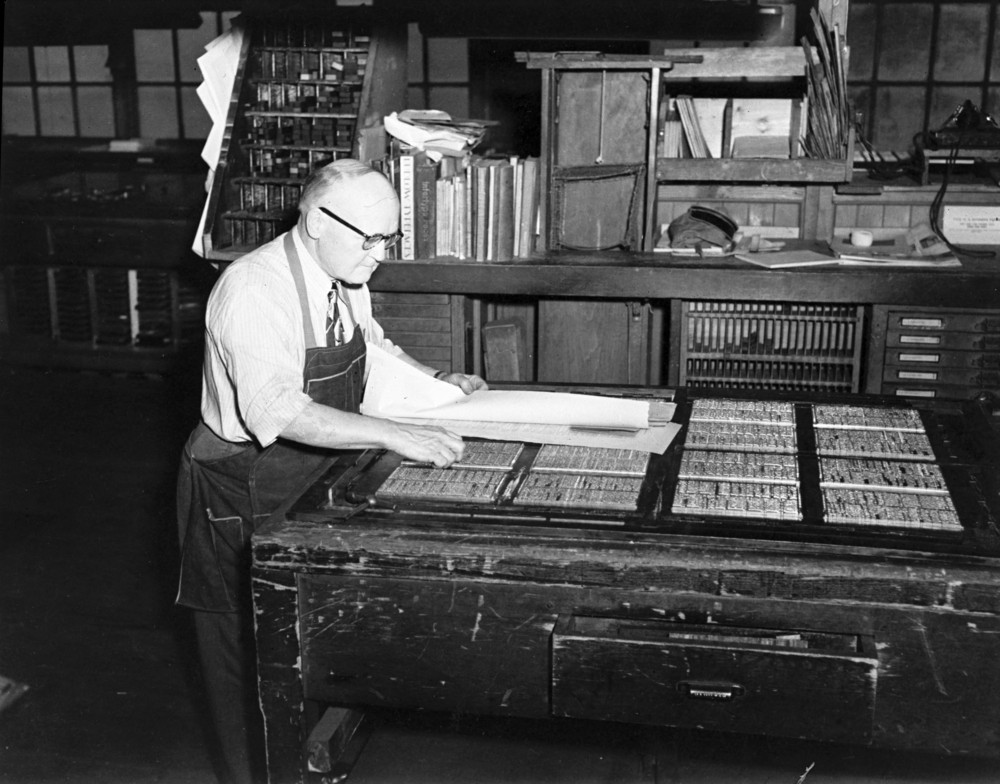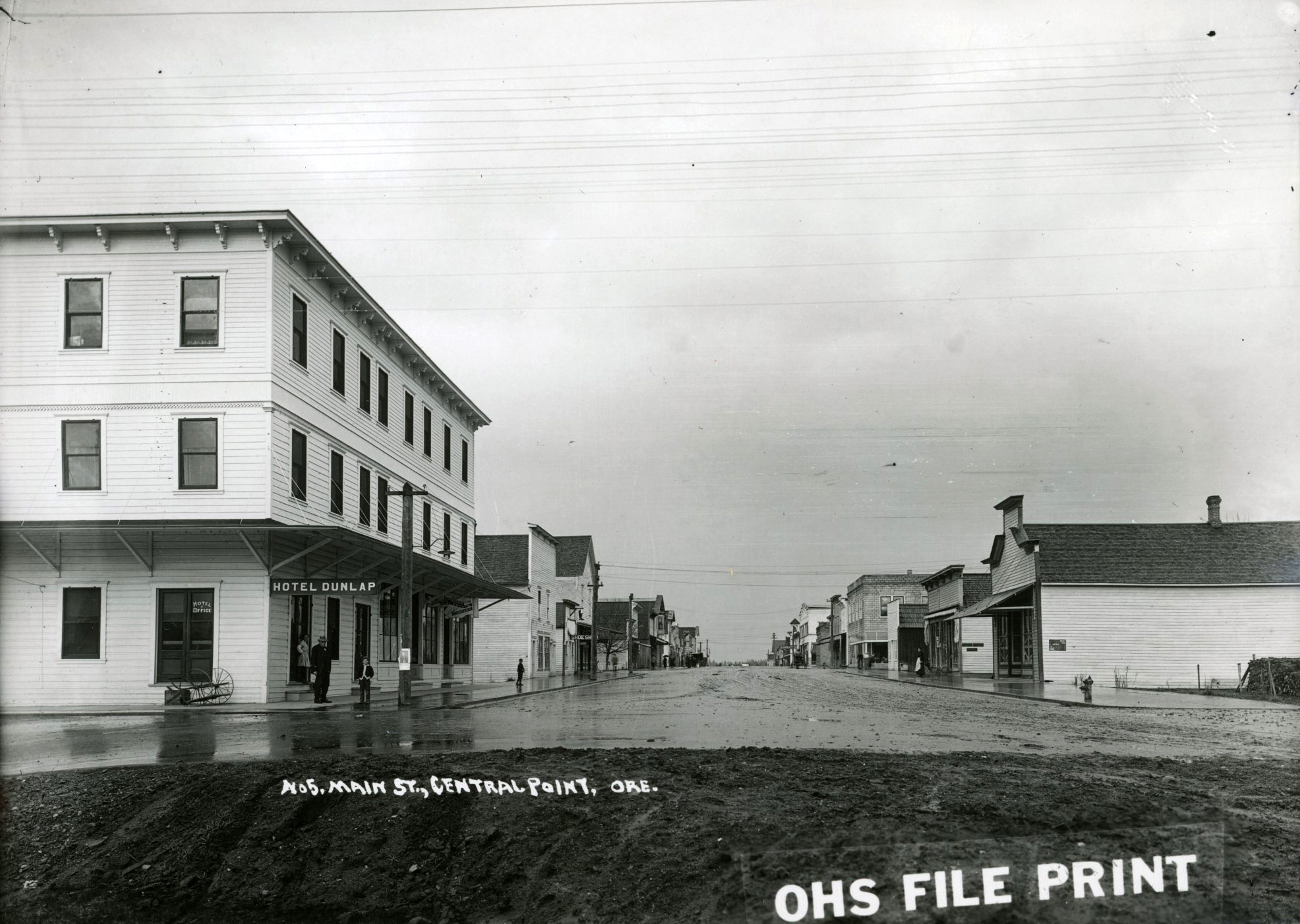Bert Webber called himself a research photojournalist. It is an apt description for a writer who was equal parts historian, journalist, and librarian.
Ebbert True "Bert" Webber grew up in San Francisco, where he became interested in writing and photography at a young age. He joined the Army Signal Corps in September 1940, serving in both Alaska and Europe. In the military, he was trained as a photo technician and newsreel cameraman. In 1944, he married Marjorie Jean Renfroe, and the couple settled in Sedro-Woolley, Washington. Webber ran a photo-finishing shop for about ten years and also worked as a journalist for the Seattle Post Intelligencer.
After completing a bachelor's degree at Whitworth College in 1965, Webber worked as a school librarian and social studies teacher in Lake Oswego. While teaching at Lake Oswego High School, he published a bibliography on The Pacific Northwest in Books and discovered his niche.
Webber obtained a master's degree in library science from the University of Portland in 1968 and worked as a librarian at Medford Senior High School before turning his energies to research, writing, and publishing. From 1967 to 2003, he wrote or co-wrote eighty-six books, most of them on Oregon history. Many were collaborations with his wife Margie and were published through their Central Point company, the Webb Research Group & Pacific Northwest Books.
Most of the Webbers’ books are what they called “documentaries,” collections of historical documents and photos, with minimal commentary and analysis. The overland passage was a favorite topic, and several books are transcriptions of pioneer diaries, with occasional annotations, maps, bibliographies, indexes, and genealogies. The couple also wrote books on the Oregon Coast, lighthouses, the Oregon Caves National Monument, Pacific Northwest postal history, covered bridges, logging, and milling. They tackled unusual topics, as well, such as the pronunciation of Oregon place names, Ashland’s 1997 New Year's Day flood, the ill-fated towns of Lakeport and Bayocean, the DeAutremont train robbery of 1923, the Rajneeshpuram postal service, and the Southern Oregon Symphonic Band (in which Bert Webber played the euphonium).
Webber’s best work may be Retaliation: Japanese Attacks and Allied Countermeasures on the Pacific Coast in World War II. He documented the Japanese attacks on Oregon and other western states, including the submarine shelling of Fort Stevens, the attempt to firebomb southern Oregon forests, and the balloon bomb attacks of 1945.
Webber died in 2006. His papers are in the Hoover Institution Archives at Stanford University.
-
![]()
The Oregon Trail Diary of Edward Evans Parrish in 1844, compiled by Bert Webber.
Courtesy Webb Research Group
-
![]()
Battleship Oregon Bulldog of the Navy. Documentary by Bert Webber.
Courtesy Webb Research Group Publishers
-
![]()
Ebbert True Webber's gravestone at Eagle Point National Cemetery.
Courtesy Ancestry.com. U.S., Find a Grave Index, 1600s-Current.
Related Entries
-
![Book Publishing]()
Book Publishing
Oregon's first book was Nez-Perce's First Book, an octavo-sized pamphle…
-
![Central Point]()
Central Point
Central Point is located about thirteen miles south of Table Rocks in t…
-
![Oregon Literature (1920-2010)]()
Oregon Literature (1920-2010)
The joint appearance in 1927 of the controversial pamphlet Status Rerum…
Map This on the Oregon History WayFinder
The Oregon History Wayfinder is an interactive map that identifies significant places, people, and events in Oregon history.
Further Reading
Webber, Bert, and Margie Webber. Flood! Ashland Devastated—New Year’s Day 1997—An Oregon Documentary. Medford, Oreg.: Webb Research Group Publishers, 1997.
Webber, Bert. Retaliation: Japanese Attacks and Allied Countermeasures on the Pacific Coast in World War II. Corvallis: Oregon State University Press, 1975. [expanded and republished as Silent Siege. Fairfield, Wash.: Ye Galleon Press, 1984, and later as Silent Seige II and III.]
Webber, Ebbert T. The Pacific Northwest in Books Tigard, Oreg.: Lanson’s Inc., 1967.






